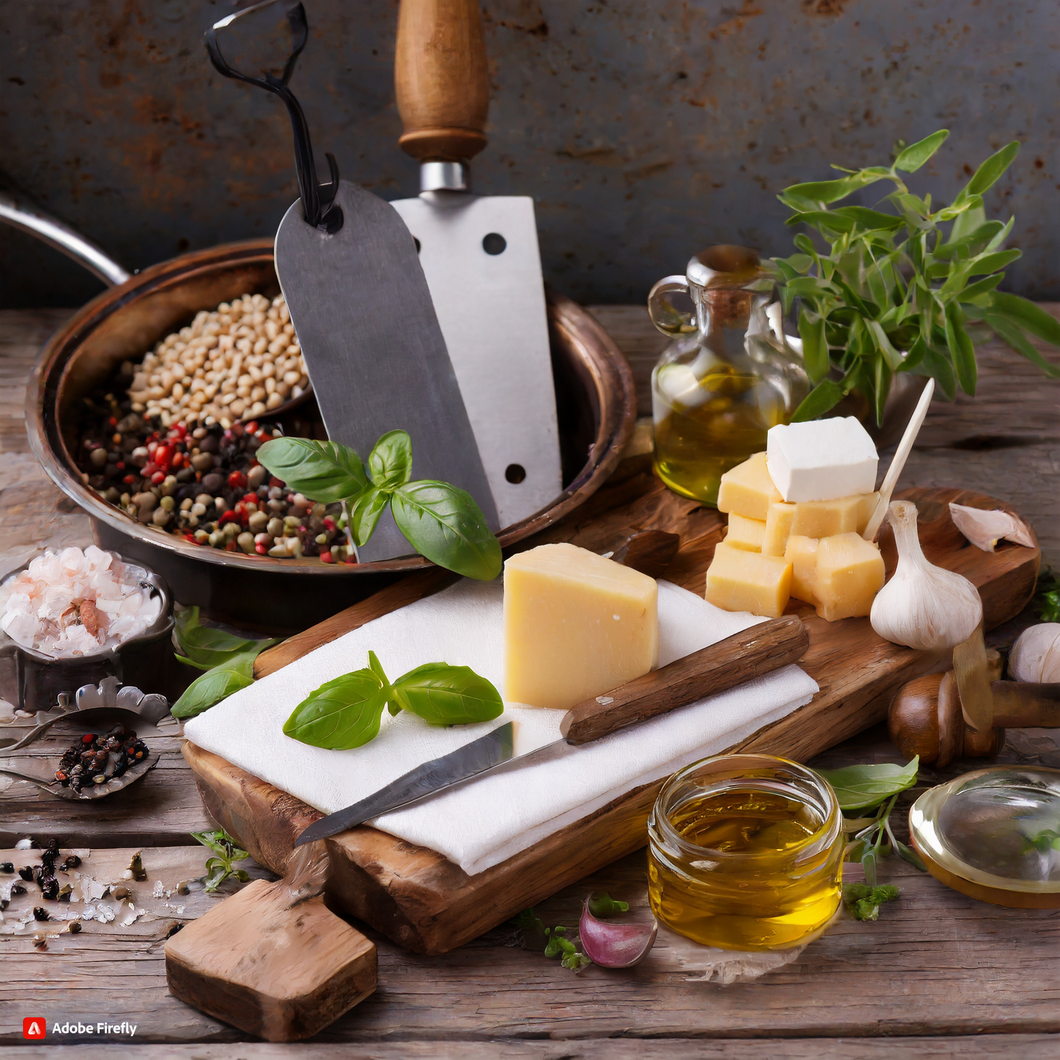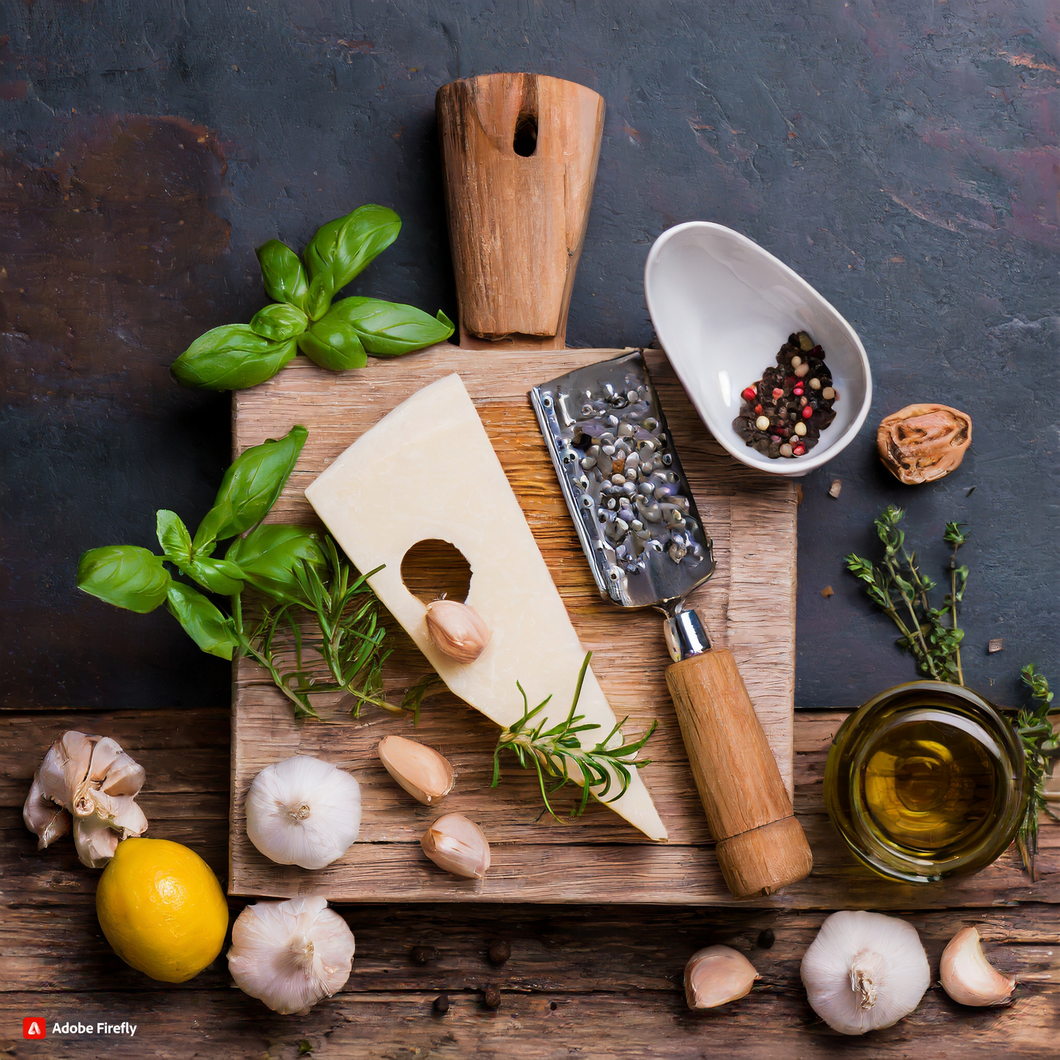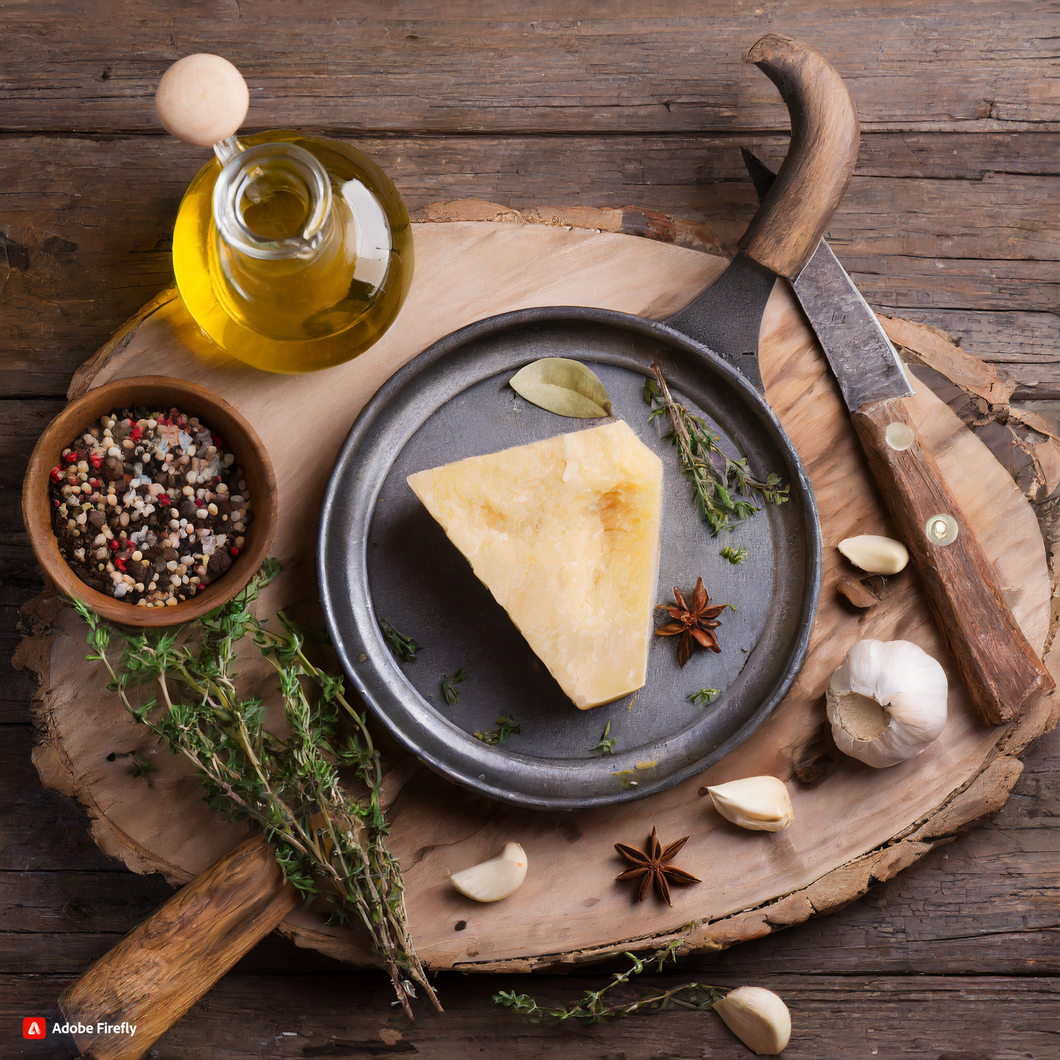Introduction
Unlock Culinary Secrets: Mastering Essential Skills is a comprehensive guide for anyone looking to improve their cooking skills and take their culinary abilities to the next level. Whether you are a beginner in the kitchen or an experienced cook, this book will provide you with the essential techniques and knowledge needed to create delicious and impressive dishes. From basic knife skills to advanced cooking methods, this book covers it all in a clear and easy-to-follow format. With Unlock Culinary Secrets, you will unlock the secrets of the kitchen and become a master in no time.
5 Essential Knife Skills Every Home Cook Should Master

Are you tired of struggling in the kitchen? Do you want to impress your friends and family with your cooking skills? Look no further, because we have the key to unlocking culinary secrets and Mastering Essential Skills. In this article, we will focus on 5 essential knife skills that every home cook should master.
1. The Pinch Grip
The first and most important knife skill to master is the pinch grip. This grip allows for better control and precision when cutting. To achieve the pinch grip, hold the knife with your dominant hand and place your index finger and thumb on the blade, just above the handle. This grip may feel awkward at first, but with practice, it will become second nature.
2. The Rocking Motion
The next skill to master is the rocking motion. This technique is used when chopping or mincing ingredients. Start by placing the tip of the knife on the cutting board and use your other hand to hold the ingredient in place. With a gentle rocking motion, move the knife back and forth, using the tip as a pivot point. This technique allows for even and consistent cuts.
3. The Claw Technique
The claw technique is essential for safety when using a knife. It involves tucking your fingertips under and using your knuckles as a guide for the knife. This technique not only protects your fingers from getting cut, but it also allows for more control and precision when cutting. Remember to keep your fingers curled and your thumb tucked in for maximum safety.
4. The Slice and Dice
The slice and dice technique is used for larger ingredients, such as onions or carrots. Start by cutting the ingredient in half, then place the flat side down on the cutting board. Using the rocking motion, make horizontal cuts, then turn the ingredient and make vertical cuts. This technique results in evenly sized pieces, perfect for soups, stews, and stir-fries.
5. The Chiffonade
The final essential knife skill to master is the chiffonade. This technique is used for cutting leafy greens and herbs into thin strips. Start by stacking the leaves on top of each other, then roll them tightly into a cylinder shape. Using a sharp knife, make thin slices across the roll. This technique is perfect for adding a pop of color and flavor to salads and pasta dishes.
Now that you have mastered these essential knife skills, it’s time to put them into practice. Remember to always use a sharp knife and keep your workspace clean and organized. A dull knife can be dangerous and make cutting more difficult. Keeping your workspace clean will prevent cross-contamination and make cooking more enjoyable.
In addition to these essential knife skills, there are a few tips to keep in mind when using a knife. Always use a cutting board to protect your countertops and knives. Avoid using glass or ceramic cutting boards, as they can dull your knife. Instead, opt for a wooden or plastic cutting board. Also, make sure to use the right knife for the job. A chef’s knife is versatile and can be used for most tasks, but a paring knife is better for smaller ingredients.
In conclusion for Mastering Essential Skills, mastering these 5 essential knife skills will not only make cooking easier and more enjoyable, but it will also impress your friends and family. Remember to practice and be patient with yourself. With time and dedication, you will become a pro in the kitchen. So go ahead, unlock those culinary secrets and become a master of essential knife skills. Happy cooking!
Unlocking the Secrets of Flavor: Understanding Seasoning and Spices
Are you tired of bland and boring meals? Do you want to take your cooking skills to the next level? Look no further, because in this article, we will unlock the secrets of flavor by understanding seasoning and spices.
Seasoning and spices are essential components in cooking that can elevate a dish from ordinary to extraordinary. They add depth, complexity, and balance to a dish, making it more flavorful and enjoyable. However, many home cooks are intimidated by the vast array of spices available and often shy away from using them. But fear not, with a little knowledge and practice, you too can become a master of seasoning and spices.
First and foremost, let’s understand the difference between seasoning and spices. Seasoning refers to the use of salt, pepper, and other herbs to enhance the natural flavors of food. On the other hand, spices are derived from plants and are used to add flavor, aroma, and color to a dish. Both are crucial in creating a well-balanced and delicious meal.

When it comes to seasoning, salt is the most crucial ingredient. It not only enhances the natural flavors of food but also helps to bring out the flavors of other ingredients. However, it is essential to use salt in moderation as too much can overpower the dish. It is always better to start with a little and add more if needed.
Pepper is another essential seasoning that adds a subtle heat and depth to a dish. It comes in various forms, such as black, white, and red pepper, each with its unique flavor profile. Experiment with different types of pepper to find the one that suits your taste buds.
Apart from salt and pepper, herbs are also commonly used for seasoning. Fresh herbs like basil, thyme, and rosemary add a burst of freshness and flavor to a dish. Dried herbs, on the other hand, have a more concentrated flavor and are best used in dishes that require longer cooking times.
Now, let’s move on to spices. Spices not only add flavor but also bring a whole new dimension to a dish. They can be used in both sweet and savory dishes, making them a versatile ingredient in the kitchen. Some commonly used spices include cumin, paprika, cinnamon, and ginger.
When using spices, it is essential to understand their flavor profiles and how they complement each other. For example, cumin and coriander are often used together in Indian cuisine as they have a similar earthy and nutty flavor. On the other hand, cinnamon and nutmeg are often paired in sweet dishes as they have a warm and sweet flavor.
One of the best ways to get familiar with spices is to experiment with them. Don’t be afraid to try new combinations and see how they work together. You can also start by using pre-made spice blends, such as curry powder or Italian seasoning, and then gradually create your own blends.
Another crucial aspect of using spices is knowing when to add them to a dish. Whole spices, such as cloves and cardamom, are often added at the beginning of cooking to infuse their flavors into the dish. Ground spices, on the other hand, are more delicate and should be added towards the end of cooking to prevent them from burning and becoming bitter.
In conclusion, seasoning and spices are the key to unlocking the secrets of flavor in cooking. With a little knowledge and experimentation, you can elevate your dishes and impress your family and friends. So don’t be afraid to get creative and have fun with seasoning and spices in your cooking. Happy cooking!
Mastering the Art of Cooking Proteins: Techniques for Perfectly Cooked Meats and Seafood
Are you tired of overcooking your meats and seafood? Do you struggle with getting the perfect sear on your steaks or the right level of doneness on your fish? Don’t worry, you’re not alone. Cooking proteins can be a daunting task, but with the right techniques, you can unlock the culinary secrets to perfectly cooked meats and seafood.
First and foremost, it’s important to understand the different types of proteins and their ideal cooking methods. Meats such as beef, pork, and lamb are best cooked using dry heat methods such as grilling, roasting, or pan-searing. On the other hand, seafood like fish, shrimp, and scallops are more delicate and require gentler cooking methods like poaching, steaming, or pan-frying.
One of the most essential skills in cooking proteins is knowing how to properly season and marinate them. Seasoning your proteins with salt and pepper is a must, but don’t be afraid to experiment with other herbs and spices to enhance the flavor. Marinating your proteins can also add an extra layer of flavor and help tenderize tougher cuts of meat. Just be sure not to over-marinate, as it can result in a mushy texture.

When it comes to cooking meats, achieving the perfect sear is key. This not only adds flavor but also creates a beautiful crust on the outside while keeping the inside juicy and tender. To achieve a perfect sear, make sure your pan is hot before adding the meat. You should hear a sizzling sound when the meat hits the pan. Also, avoid overcrowding the pan, as this will lower the temperature and prevent a good sear. And remember, don’t flip the meat too often – let it cook for a few minutes on each side before flipping.
For those who prefer their meats cooked to a specific level of doneness, investing in a meat thermometer is a game-changer. This handy tool allows you to check the internal temperature of the meat, ensuring it’s cooked to your desired level. For example, a medium-rare steak should have an internal temperature of 135°F, while a well-done steak should reach 160°F.
When it comes to cooking seafood, timing is crucial. Overcooking seafood can result in a rubbery and dry texture, while undercooking can lead to a raw and unpleasant taste. The best way to ensure perfectly cooked seafood is to use a timer and keep a close eye on it. Fish, shrimp, and scallops only need a few minutes to cook, so be sure not to leave them unattended.
Another important technique in cooking seafood is knowing when it’s done. Fish should be opaque and flaky, shrimp should be pink and curled, and scallops should be firm and slightly translucent. If you’re unsure, you can always use a meat thermometer to check the internal temperature. Fish should reach 145°F, shrimp should reach 120°F, and scallops should reach 130°F.
Lastly, don’t be afraid to experiment with different cooking methods and flavors. Grilling, roasting, and pan-searing are all great ways to cook proteins, but don’t limit yourself to just these methods. Poaching fish in a flavorful broth or steaming shrimp with herbs and spices can also result in delicious and perfectly cooked proteins. Read Healthy Dessert Recipes.
In conclusion Mastering Essential Skills, mastering the art of cooking proteins is all about understanding the different types of proteins, knowing how to properly season and marinate, achieving the perfect sear, using a meat thermometer, and being mindful of timing and doneness. With these essential skills, you’ll be able to unlock the culinary secrets to perfectly cooked meats and seafood. So go ahead, grab your apron and get cooking!
Q&A – Mastering Essential Skills
Q: What is Unlock Culinary Secrets?
A: Unlock Culinary Secrets is a program or course designed to help individuals Mastering Essential Skills in cooking and culinary arts.
Q: Who can benefit from Unlock Culinary Secrets?
A: Anyone who is interested in improving their cooking skills and learning essential techniques in the culinary arts can benefit from Unlock Culinary Secrets.
Q: What are some examples of essential skills taught in Unlock Culinary Secrets?
A: Some essential skills taught in Unlock Culinary Secrets may include knife skills, cooking techniques, flavor pairing, and plating presentation.
Conclusion for Mastering Essential Skills
In conclusion for Mastering Essential Skills, Unlock Culinary Secrets: Mastering Essential Skills is a valuable resource for anyone looking to improve their cooking skills. This comprehensive guide covers all the essential techniques and knowledge needed to become a skilled and confident cook. From basic knife skills to advanced cooking methods, this book provides clear and concise instructions, along with helpful tips and tricks.
By mastering these essential skills, readers will be able to elevate their cooking to the next level and unlock a world of culinary possibilities. Whether you are a beginner or an experienced cook, this book is a must-have for anyone looking to enhance their culinary abilities. With practice and dedication, anyone can become a master in the kitchen with the help of Unlock Culinary Secrets.
Please follow us on linkedin. You can learn all best canadian food recipes you can check our Culinary 1TouchFood Youtube and Telegram 1TouchFood page. Don’t forget Fighting Obesity Magazine and Radio Cooking.

